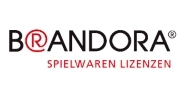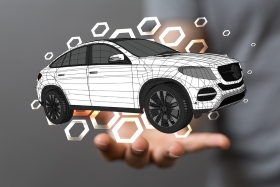|
|
By Dr. Mischa Dippelhofer, Lawyer and Lecturer at Saarland University Protection of Manufacturer’s Brands or Exact Miniature Replica? Many automobile manufacturers register their brands not only for automobiles but also for Class 28 (Games and Playthings). This fact presents manufacturers of toy vehicles with a delicate problem: If they want to produce exact miniature replica of well-known vehicles, their model cars should also display an originally branded radiator grille. Do they need to acquire an official licence for this? The answer is far from simple. The German Federal Supreme Court came to the final decision that consumers in Germany would not conclude that a toy car featuring the distinctive Opel mark was indeed implicitly endorsed or manufactured by Opel. (5). Thus the functions of the trade mark remain unaffected (6). Although the affixation of the distinctive brand logo might take advantage of the reputation of the prototype, this advantage is not deemed unfair as long as the toy car is an exact replica of the prototype (7). However, the Regional Court Düsseldorf, Germany, decided that the right to use a manufacturer’s brand for toy cars is limited: A trading company launched a low-cost Formula One toy racing car made of cheap plastic onto the German market. The design reminded the consumer of a famous red Ferrari racer. But instead of the popular Ferrari horse the brand logo featured a black bull against a yellow background. The Regional Court Düsseldorf issued an injunction barring the company from distributing the product in Germany due to violation of Ferrari property rights. In this case, the company unfairly exploited the reputation of the famous Ferrari brand because the toy car was no exact replica of the prototype. The cheap model was not a miniature model of an existing racing car and the featured logo varied from the original brand (8). For Germany we can conclude that: The original manufacturer’s brand may be used without acquiring the official license for toy cars if the model car is an exact miniature replica of the prototype and the original logo remains unchanged. It is strongly recommended to use the logo only in the exact same position on model cars as it is featured on the prototype. Do not display the logo on outer packaging. Unfortunately, this conclusion is not applicable to other EU Member States as jurisdiction varies. For example: A court in Spain decided that the display of an original logo on a toy car constitutes a violation of property rights (9). Manufacturers of toy cars who want to distribute their products across the European Union should always seek expert legal advice for every single member state and key market. You are strongly advised to negotiate official licensing agreements for individual member states if necessary. Notes:
|


 In general, trademark law is standardized across European countries. However, current jurisdiction of the European Court of Justice (ECJ) leads to non-uniform application of law within the European Union. The ECJ concluded that a mark that is also registered for playthings may be affixed to scale models of vehicles unless it affects or is liable to affect the functions of that trade mark (1). The crucial question is, whether consumers in the relevant EU Member State are used to toy cars displaying the manufacturer’s brand in order to complete the exact replica of the prototype or if they see the logo as a reference of trade origin (2). So it is up to the relevant national court to determine how national consumers usually interpret a manufacturer’s logo on scale models (3). On the other hand, the affixation of a brand to toy cars might also deliberately exploit the reputation of a well-known and popular motor vehicle brand. However, this is also up to the decision of the relevant national court (4).
In general, trademark law is standardized across European countries. However, current jurisdiction of the European Court of Justice (ECJ) leads to non-uniform application of law within the European Union. The ECJ concluded that a mark that is also registered for playthings may be affixed to scale models of vehicles unless it affects or is liable to affect the functions of that trade mark (1). The crucial question is, whether consumers in the relevant EU Member State are used to toy cars displaying the manufacturer’s brand in order to complete the exact replica of the prototype or if they see the logo as a reference of trade origin (2). So it is up to the relevant national court to determine how national consumers usually interpret a manufacturer’s logo on scale models (3). On the other hand, the affixation of a brand to toy cars might also deliberately exploit the reputation of a well-known and popular motor vehicle brand. However, this is also up to the decision of the relevant national court (4).